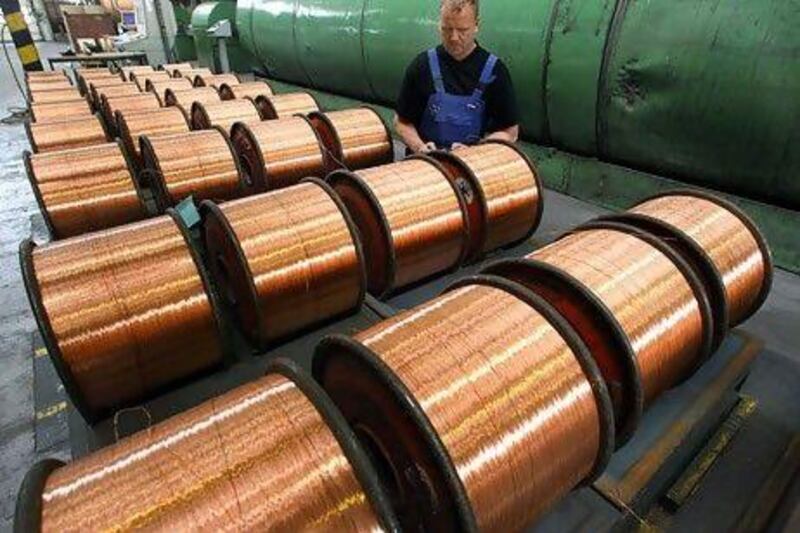Elsewedy Electric is boosting productivity at a time of falling copper prices.
That should be good news for the bottom line of the Arab world's biggest cable maker, based in Egypt, with copper accounting for 80 to 85 per cent of its copper cable production costs. The price of the metal has fallen by 25 per cent, or US$2,500 per tonne, since its peak in February.
"Working investment savings for the copper cable business could amount to as much as $33 per tonne, for every $100 fall in copper prices," said Ahmed Hafez, an analyst at AlembicHC in Dubai. "This should ease balance pressure, which has been a primary concern for the past year."
Elsewedy has four main business segments: wires and cables; electrical products; turnkey projects; and wind energy.
The low-margin wires and cables segment has historically been the primary revenue and value driver of the company, accounting for more than 75 per cent of revenue and 60 per cent of value of gross profit lines last year.
Elsewedy has pursued a geographic expansion strategy through establishing cable plants across the Middle East.
The criteria involved expanding operations in poor and underdeveloped infrastructure markets that could potentially serve as export hubs for neighbouring markets, such as Sudan and Ethiopia to the rest of Africa, and Yemen and Syria to Iraq.
The strategy also included expanding in rich countries characterised by strong budget surpluses expected to offer strong potential for infrastructure spending, such as Saudi Arabia, Qatar and Algeria.
That should change by next year, however, as the turnkey segment is headed towards representing one third of Elsewedy's overall business.
The division's backlog stood at 3.6 billion Egyptian pounds at the end of June, with more than 70 per cent of it from Cameroon, Zambia, and Ghana in power generation, transmission and distribution projects.





